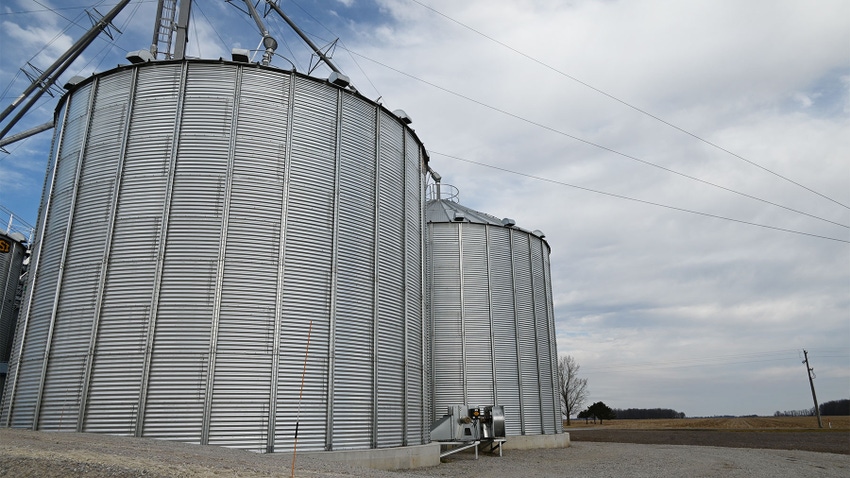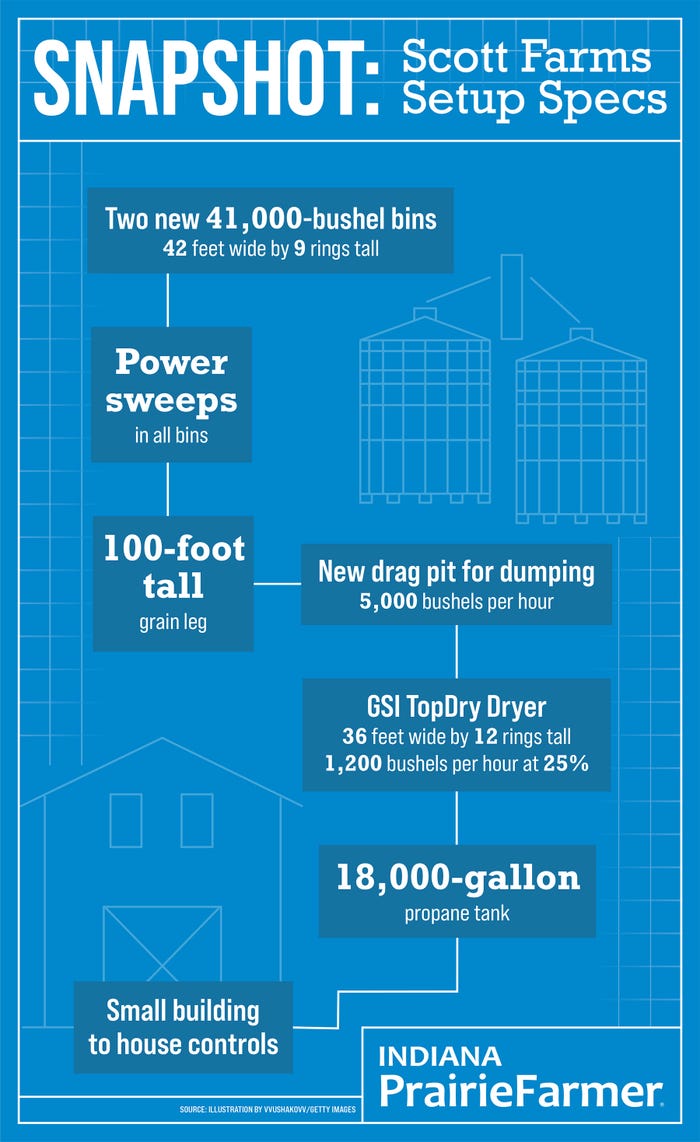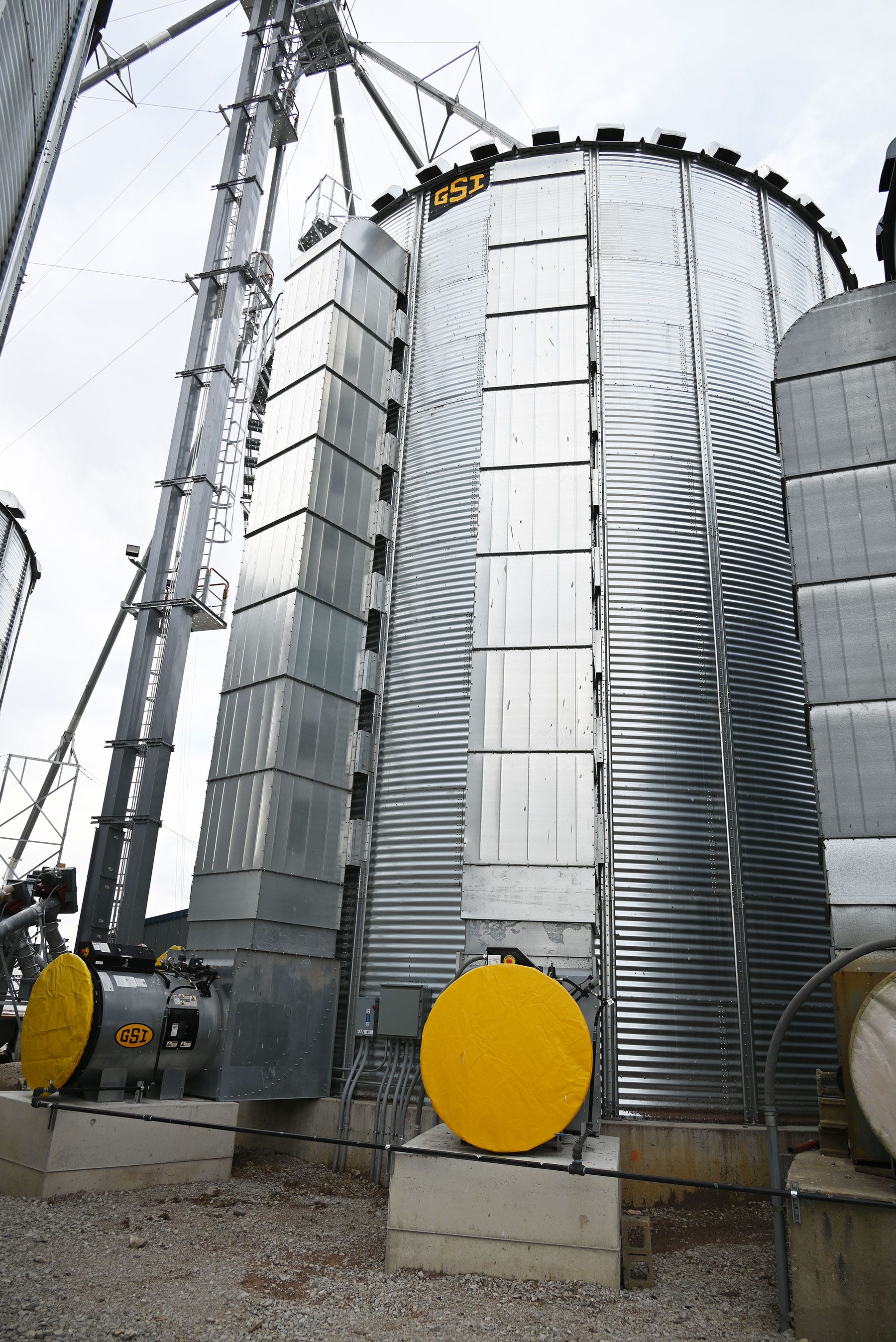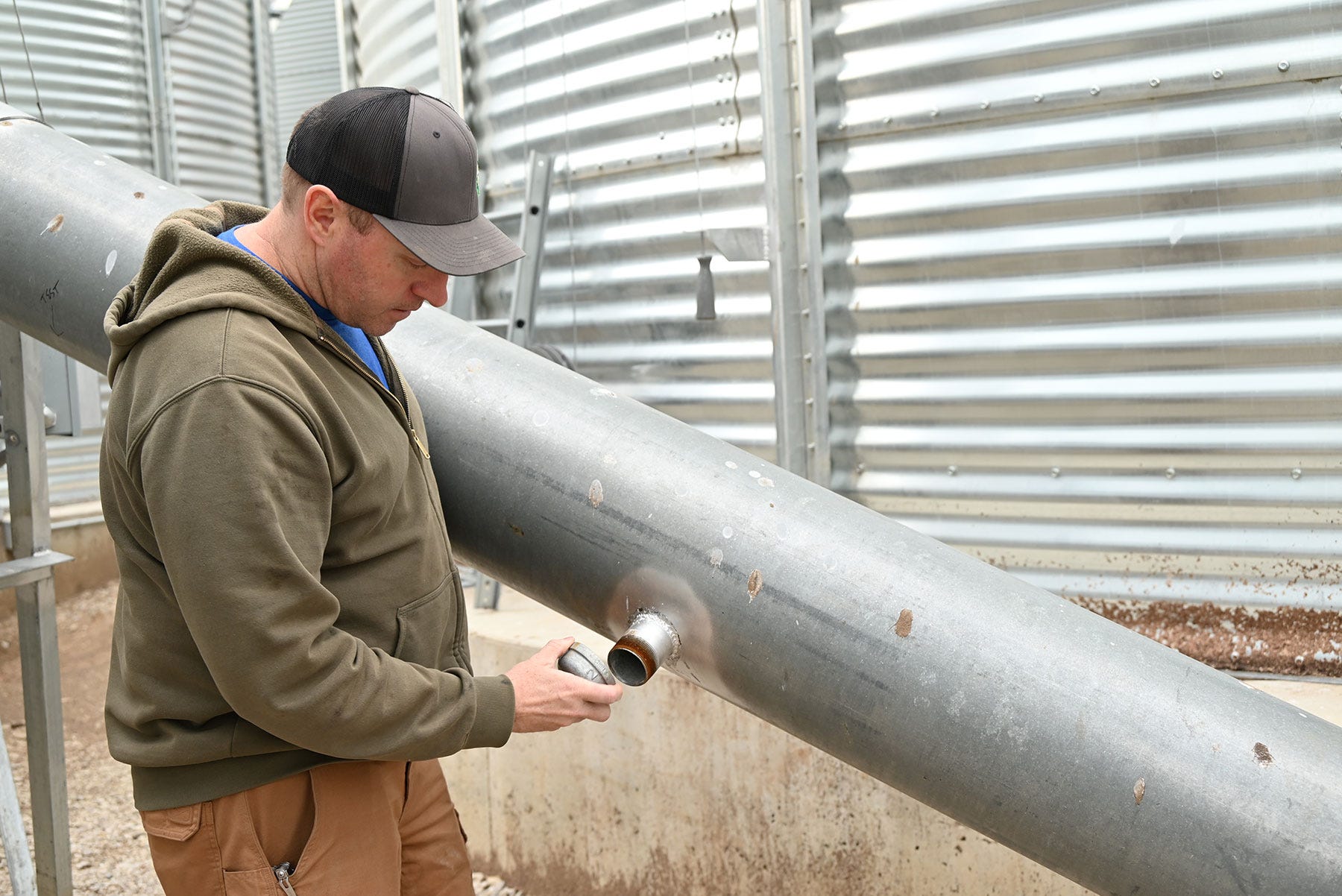April 10, 2024

Taking on a grain storage improvement project may seem daunting, but setting aside time for planning can chase away some of those fears. It may seem that everyone has built an addition or incorporated an upgrade that they swear is the best way to go, and it can be hard to know what will work in your operation.
Brian Scott, Delphi, Ind., tackled improvements to his grain drying and storage setup last year with his father, John, and he says the most important consideration is to think about what you’ll need 10 years down the road. Otherwise, he notes, the updates one makes to their operation is largely dependent on their experiences and the goals they’re trying to meet.
Scott’s setup specs
Scott was largely looking to expand storage at his grain facility. To do this, he tore down four old grain bins and constructed two 42-foot-wide bins that are nine rings tall and hold about 41,000 bushels each. With these new bins, Scott was hoping to achieve a more cohesive layout that would be easy to expand in the future.
“With the old system, nothing was laid out in a straight line, so we were trying to square things up and make things the same size, and set it up so we could build one or two more bins just like that,” Scott says. “Now, it’ll be easy to do if we want to do it.”
Scott put this additional storage to the test when he harvested his second-best corn crop last fall. Typically, he explains they would haul about 50 to 60 loads of corn to the grain elevator in the fall, but they were able to store it all at the improved facility this year.
“We still had a little bit of room to spare, so that’s a good thing,” he adds.

The other big change was a new GSI TopDry dryer. Scott says it is 36 feet wide by 12 rings tall, and it is rated at 1,200 bushels per hour at 25% moisture. This is an upgrade from their previous 20-year-old GSI TopDry dryer.
Scott prefers this style of dryer over a tower dryer because it does not need to be constantly unloaded, which saved him money by not having to install a second grain leg. These types of dryers can also function as a bin the rest of the year.
He also added a new unload system that consists of a drag pit connected to the new 100-foot-tall leg. The system can handle about 5,000 bushels per hour. After the upgrades, Scott says they can unload a truck in 15 minutes, compared to the 35 minutes it used to take.
Additionally, Scott added power sweeps to all the bins, with plans to add one to an older bin when it’s empty later this year. “Now, it’s a lot easier to unload them when we get down to the floor,” he notes.

UPGRADE: Brian Scott upgraded to a new GSI TopDry dryer after using their old TopDry for over 20 years. He appreciates having the ability to use it as a storage bin.
The improvements expand beyond the bins and dryer. Another upgrade Scott made was constructing a building to house all the control panels. He says this allows him to stay out of the elements.
An addition that’s already paying for itself is the 18,000-gallon propane tank that Scott installed. He says he planned on it taking eight to 10 years to see a return on investment for the tank, but the wet fall put it to the test. Scott says he filled the tank three times last year, and his savings have paid off about a third of the price.
“We probably almost have enough gas on hand for this season with the way it sits,” Scott adds. “We didn’t expect to take that third truckload, but we just needed it the last few days of harvest.”

SMALL CHANGE: One small but important change Brian Scott included was a sample port in the unload on the new dryer to monitor grain moisture. He shows how easy it is to grab grain samples.
As far as monitoring grain quality, Scott did not change much. He says they added a sample port in the unload on the dryer to check the moisture.
“That’s the hard thing with the TopDry,” he says. “It’s a bin, but it’s a dryer, so you don’t have to be constantly unloading it all the time like a normal dryer. The downside is you’re not getting constant information about what the moisture is, so we had to put in a port to be able to check easily.”
Overall, Scott would not change anything about these improvements and additions. However, he stresses the importance of thinking ahead in terms of what will be useful in future growing seasons.
About the Author(s)
You May Also Like






